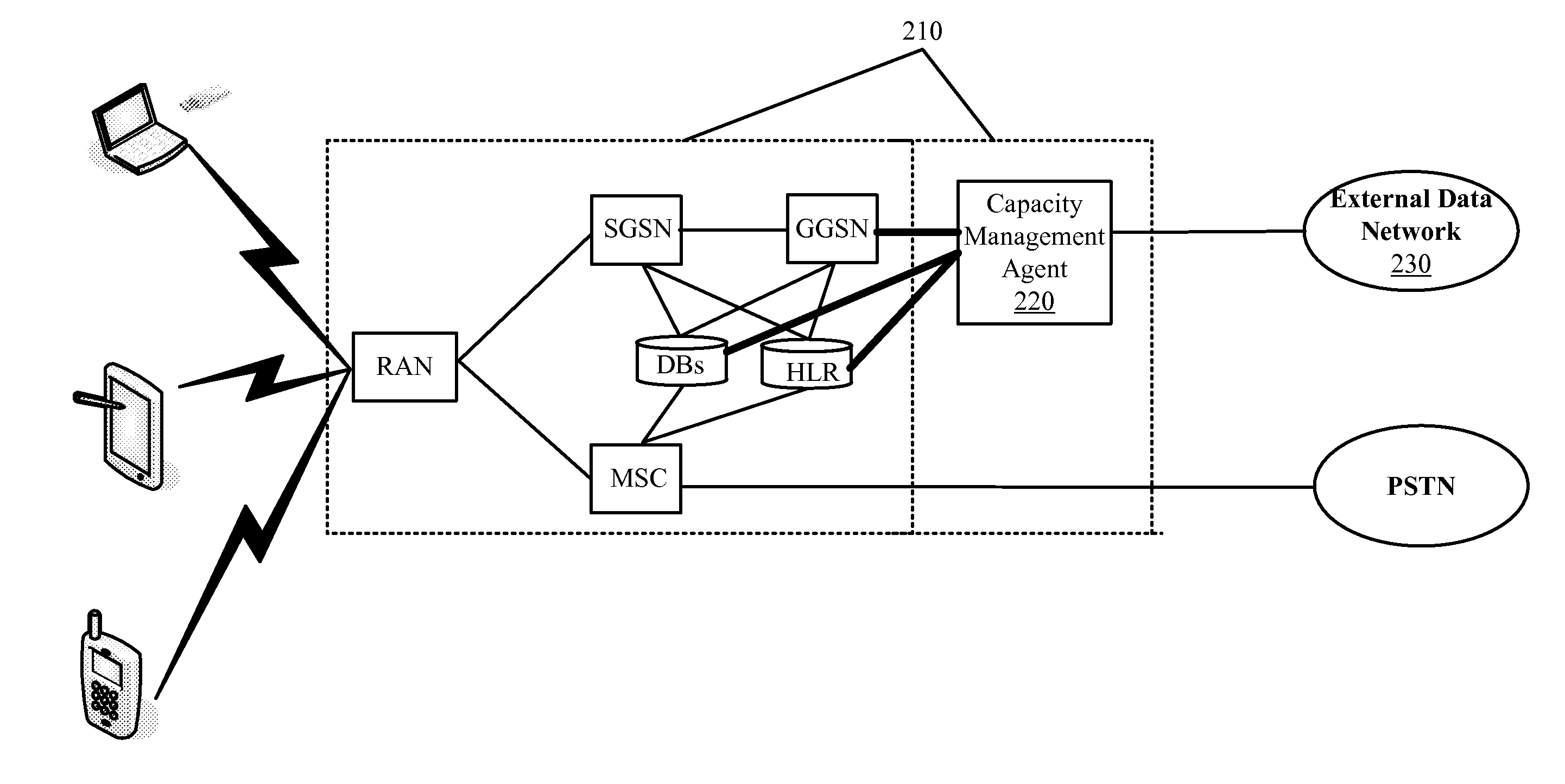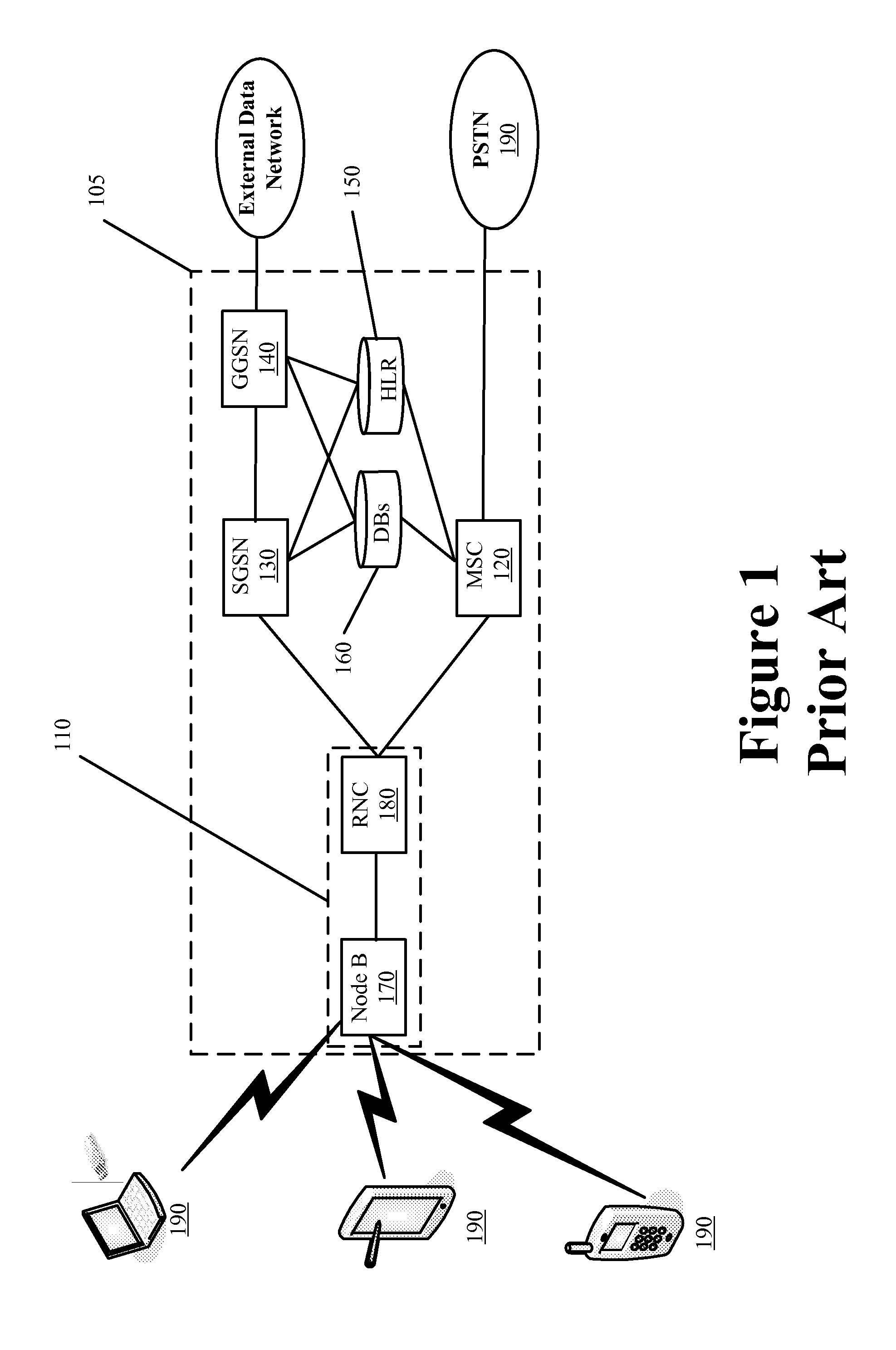Request Modification for Transparent Capacity Management in a Carrier Network
- Summary
- Abstract
- Description
- Claims
- Application Information
AI Technical Summary
Benefits of technology
Problems solved by technology
Method used
Image
Examples
Embodiment Construction
[0031]In the following detailed description, numerous details, examples, and embodiments of a capacity management agent that transparently improves capacity for a carrier network is set forth and described. It will be clear and apparent to one skilled in the art that the capacity management agent is not limited to the embodiments set forth and that the capacity management agent may be practiced without some of the specific details and examples discussed.
[0032]I. OVERVIEW
[0033]Some embodiments provide a capacity management agent for a carrier network. The capacity management agent operates to transparently improve the capacity of the carrier network. This allows for greater simultaneous usage of the carrier network without having to upgrade the existing infrastructure or resources of the carrier network. The capacity management agent seamlessly integrates with the existing components of the carrier network. In some embodiments, the carrier network is a wireless carrier network that p...
PUM
 Login to View More
Login to View More Abstract
Description
Claims
Application Information
 Login to View More
Login to View More - R&D
- Intellectual Property
- Life Sciences
- Materials
- Tech Scout
- Unparalleled Data Quality
- Higher Quality Content
- 60% Fewer Hallucinations
Browse by: Latest US Patents, China's latest patents, Technical Efficacy Thesaurus, Application Domain, Technology Topic, Popular Technical Reports.
© 2025 PatSnap. All rights reserved.Legal|Privacy policy|Modern Slavery Act Transparency Statement|Sitemap|About US| Contact US: help@patsnap.com



